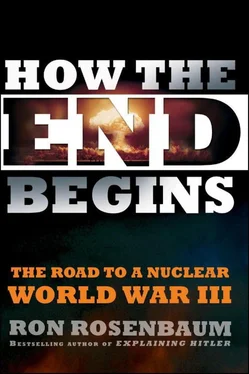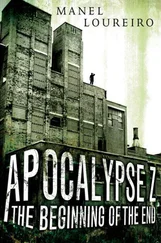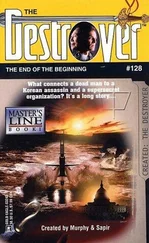At seventy-one, the retired colonel walks with the stiffened gait that bespeaks a lifelong military bearing as well as age. One can imagine a younger version of him goose-stepping behind a missile in the Kremlin’s May Day parade. He was—and is—a Russian patriot. But he was—and is—a rationalist in a realm of absurdists. He tells me, as we swerve around DuPont Circle to Connecticut Avenue toward our destination restaurant, La Tomate, that he grew up in a military family, that his father (and family) suffered through the notoriously bloody three-year-long siege of Leningrad by savage Nazi armies. He followed his father into the military and his first posting was as a launch control officer for one of the Soviets’ biggest and newest ICBMs. It was its very size that made its use problematic, he tells me.
For instance, he says, with a shrug at the absurdity of things, it was what “saved the world” during the Cuban Missile Crisis.
There was no sunlight in the underground bunker he was occupying that October in 1963, a command module deep beneath the tundra that ministered to the SS-6, a giant, unwieldy liquid-fueled monster of an ICBM, lurking in an underground silo that was, then, the newly commissioned and operational pride of the Soviet Strategic Rocket Forces.
It was the rocket that would have been tasked with taking out New York, Los Angeles, or Washington, some huge population or government center in a retaliatory strike—unless it was used to strike first to incapacitate our silo-based missiles or to decapitate our chain of command, in which case the ground we were walking on would have melted into a literal pit of fire.
But instead this dinosaur, this Tyrannosaurus rex of rockets that ruled the early nuclear ages, may have—in its very monstrous unwieldiness—as Yarynich put it, saved the world.
“Saved the world?” I asked as we continued on Connecticut Avenue, all looking so safe and tidy, newspaper boxes gleaming in the sun.
Yes, saved the world, Yarynich said, because the liquid fuel was a mixture of two unstable substances that were designed to be fed into the missile’s devil’s maw at the last minute; it was too unstable to sit around with the explosive brew good to go. And once the two elements of the liquid fuel, including super-cooled nitrogen, were mixed inside the missile’s storage tanks, the liquid became too unstable to be preserved or reused. So fueling the missile was expensive: if not used after a short period of time the fuel had to be drained and discarded at great, unrecoverable cost.
Thus on Saturday, October 27, 1962, at the height of the Cuban Missile Crisis, when a Soviet freighter approached the imaginary line in the South Atlantic drawn by President Kennedy, the Kremlin had to make a decision as to whether to resist a U.S stop-and-search at sea. That blockade operation could have escalated quickly into conflict, especially since we now know that Soviet and Cuban teams were moving nuclear-tipped missiles into place above Guantánamo Bay ready to attack the U.S. base there and a Soviet sub was aiming its nuclear-tipped torpedo at the U.S. blockade ship. The Kremlin had to decide just how ready it was to stand up to the Kennedy move: if they ordered their freighter to resist boarding and the U.S. Navy struck it, the Soviets would have had their choice of retaliation points: Berlin, Gitmo, or—why wait—go for a preemptive first strike knockout blow right away. Any of these moves would have required Yarynich’s missile to be fueled up and ready to launch.
Fortunately, according to Yarynich, one factor prevailed over all geopolitical considerations: the Kremlin he told me was “very cheap.” They didn’t want to start the expensive process of fueling the missile—and then draining the unreusable mix—unless they were determined to use it. So they backed down from a confrontation. The price of fuel may have tipped the balance.
Maybe the argument about cost in the Kremlin was just a fig leaf for a failure of nerve (they knew, though we didn’t, how overmatched their nuclear arsenal was). Or a belated return to sanity from the shores of apocalyptic absurdity.
Yarynich laughs now at the triumph of cheapness over all else, the absurdity of it all. But the issue of readiness and alert, the fact that thousands of rockets can still be fired with much more decisive rapidity now than in the days of the liquid-fueled dinosaurs, has remained on his mind as today’s dangerous absurdity.
Up until now, the most public focus of post–Cold War nuclear deescalation has been on reducing the number of warheads by using the START treaties. But for serious students of arms control the greater issue is de-alerting the deadly remaining arsenals from their hair-trigger, launch on warning posture. [181]Yarynich’s book was an attempt to bring this problem out in the open: it was meant to let the U.S. know what the Russian launch procedures were, and to let the U.S. know how much the Russians knew about the U.S. launch procedures, which was quite a lot. The book was like an MRI of the Russian nuclear brain.
But the book didn’t change anything. In fact, it came out just as the George W. Bush administration was framing up a new, more aggressive nuclear posture. The hand extended on its cover was cut off in more ways than one.
So both Bruce Blair, the former missile man, and Valery Yarynich, himself a former missile crewman and now Blair’s Russian collaborator, have devised separate plans that they believe can address the problem of nuclear missiles going off because of unverifiable electronic warnings. They are not incompatible, Blair’s is more simplified and less hierarchical than Yarynich’s multi-“echelon” strategic architecture.
Blair’s plan has four phases, but I’d like to focus on the first two, which seem to me to be the simplest to carry out, the least likely to arouse opposition, and the most likely to reduce anxiety about nuclear “inadvertence,” the bland term for blowing the world up unintentionally.
In Phase 1 of Blair’s approach, he recommends “revising the nuclear war plans to eliminate massive attack options and launch-on-warning from the repertoire of response options available to nuclear decision-makers.” [182]In Blair’s vision, massive attacks wouldn’t be impossible; they just wouldn’t be a one-step option in the president’s nuclear football. Neither side has an interest in deliberately annihilating the other and suffering annihilation in return. Why not acknowledge that and remove the capability from instant inadvertent use? Remove it from our football. Remove it from their PERIMETR.
In addition, Blair suggests that “the strategic missile forces could also be de-targeted, stripped of all wartime aim points.” [183]At the moment, missiles are de-targeted in the sense that specific targets have been removed from the software in the missiles. But targeting codes can be called up and reinstalled in moments—the coordinates are still programmed into missile-base computers. In Blair’s plan, retargeting the missiles would take hours rather than minutes, and missiles would be less subject to a cyber-spoofed launch order.
In Phase 2 of Blair’s de-alerting proposals, “strategic missiles in silos would be isolated from external launch control, by flipping a safety switch inside each silo, as was done in 1991 when President Bush de-alerted nearly one-half of the US Minuteman force almost overnight.” [184]De-alerting the rest of our missiles would prevent an electronic or physical takeover of a command center on a missile base from being able to cause an immediate unauthorized launch. (That’s because re-alerting the missiles would take at least twenty-four hours and could not be done from within the silos.) The Russians would simultaneously match our measures, and the moves on both sides would be subject to verification. Blair also proposes that submarines at sea refrain from installing a crucial element of their launch system, the so-called inverters, the devices that need to be triggered to permit a launch order to be executed. This would also preclude an inadvertent launch.
Читать дальше











